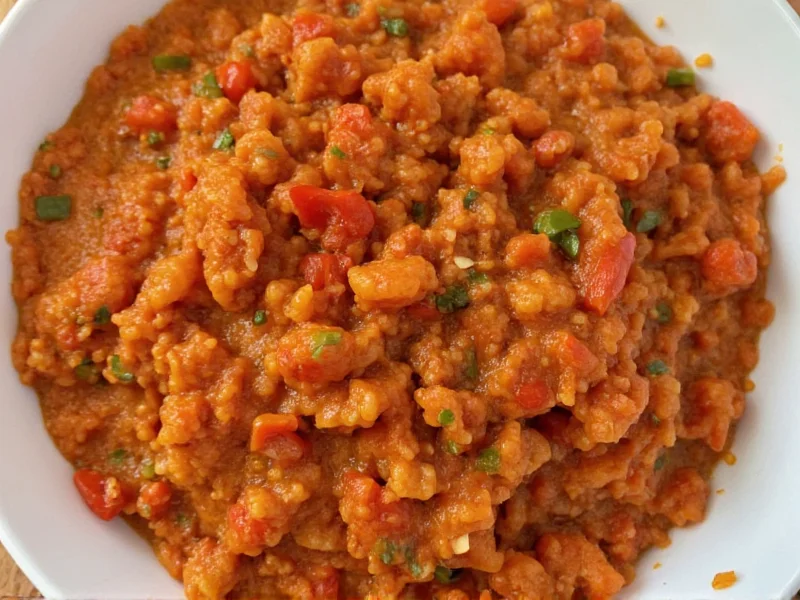Understanding pimento substitutes is essential for home cooks facing recipe challenges. Pimentos, those small, sweet red peppers often found in jars, are actually a specific variety of red bell pepper that's been roasted and peeled. Many grocery stores now label standard roasted red peppers as 'pimentos,' causing confusion about proper substitutions.
What Exactly Are Pimentos?
Pimentos (sometimes spelled pimientos) are small, heart-shaped sweet red peppers with thin walls and a bright red color when mature. They measure between 100-500 Scoville heat units, making them significantly milder than jalapeños. Commercially, the term 'pimento' often refers to any roasted, peeled red bell pepper packed in jars. This labeling practice explains why many substitute questions arise—what you're likely missing is simply roasted red bell pepper.
Top 5 Substitutes for Pimentos
When your recipe calls for pimentos and you're out, these alternatives work well with slight adjustments:
| Substitute | Flavor Profile | Texture Match | Best Recipe Applications |
|---|---|---|---|
| Roasted red bell peppers | Sweet, mild, slightly smoky | ★★★★★ | Pimento cheese, sandwiches, salads, tapas |
| Roasted poblano peppers | Earthy, mild heat (250-500 SHU) | ★★★★☆ | Stuffed olives, Spanish rice, casseroles |
| Roasted Anaheim peppers | Mild, slightly grassy | ★★★☆☆ | Cream cheese spreads, deviled eggs |
| Sun-dried tomatoes (oil-packed) | Tangy, intense umami | ★★★☆☆ | Mediterranean dishes, pasta sauces |
| Sweet paprika + tomato paste | Smoky-sweet, no heat | ★★☆☆☆ | Sauces, dressings, dips |
How to Prepare the Best Pimento Substitute
For optimal results when substituting pimentos, follow these preparation steps:
- Roast fresh peppers: Place whole red bell peppers directly over gas flame or under broiler until skin blackens (about 8-10 minutes), turning frequently
- Sweat and peel: Transfer to covered bowl for 10 minutes, then remove skin and seeds
- Pat dry: Excess moisture affects recipe texture—especially crucial for pimento cheese
- Chop finely: Match the diced size specified in your recipe (typically 1/8-1/4 inch)
Homemade roasted peppers maintain quality for up to 5 days refrigerated or 3 months frozen. For immediate use, jarred roasted red peppers work well—just drain thoroughly and pat dry before incorporating into recipes.
Recipe-Specific Substitution Guide
Pimento Cheese
When making pimento cheese, roasted red bell peppers provide the closest flavor match. Use a 1:1 ratio, but reduce added salt by 25% since jarred peppers contain preservatives. For authentic Southern pimento cheese texture, finely mince the peppers rather than using pre-chopped varieties.
Stuffed Olives
For olive stuffing, roasted poblano peppers offer better structural integrity than bell peppers. Their slightly thicker flesh holds shape better during the pitting process. Briefly blanch peppers after roasting to maintain firmness—this prevents the common issue of substitutes becoming too soft for stuffing.
Spanish Rice and Paella
In grain dishes, combine roasted red peppers with a pinch of smoked paprika to replicate the subtle smokiness of authentic pimentos. Add during the last 5 minutes of cooking to preserve color—extended heat causes bell peppers to lose their vibrant red hue faster than true pimentos.
Substitutes to Avoid
Certain alternatives compromise both flavor and texture:
- Raw bell peppers: Too crunchy and lack the characteristic roasted sweetness
- Canned pimientos labeled 'pimento': Often contain vinegar that alters recipe chemistry
- Cherry peppers: Significantly hotter (5,000+ SHU) than authentic pimentos
- Red pepper flakes: Completely different texture and heat profile
Storage Tips for Homemade Substitutes
Maximize shelf life of your pimento alternatives:
- Store in airtight containers with 1-2 tablespoons of olive oil to prevent drying
- Layer peppers with parchment paper if freezing in flat sheets
- Add a squeeze of lemon juice to maintain vibrant red color during refrigeration
- Portion into ice cube trays with oil for recipe-specific measurements











 浙公网安备
33010002000092号
浙公网安备
33010002000092号 浙B2-20120091-4
浙B2-20120091-4